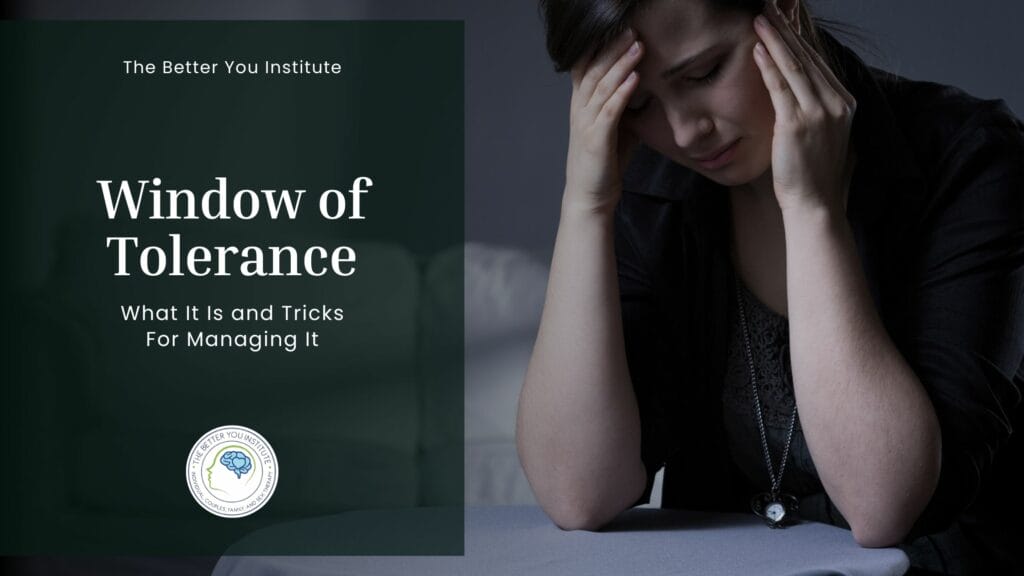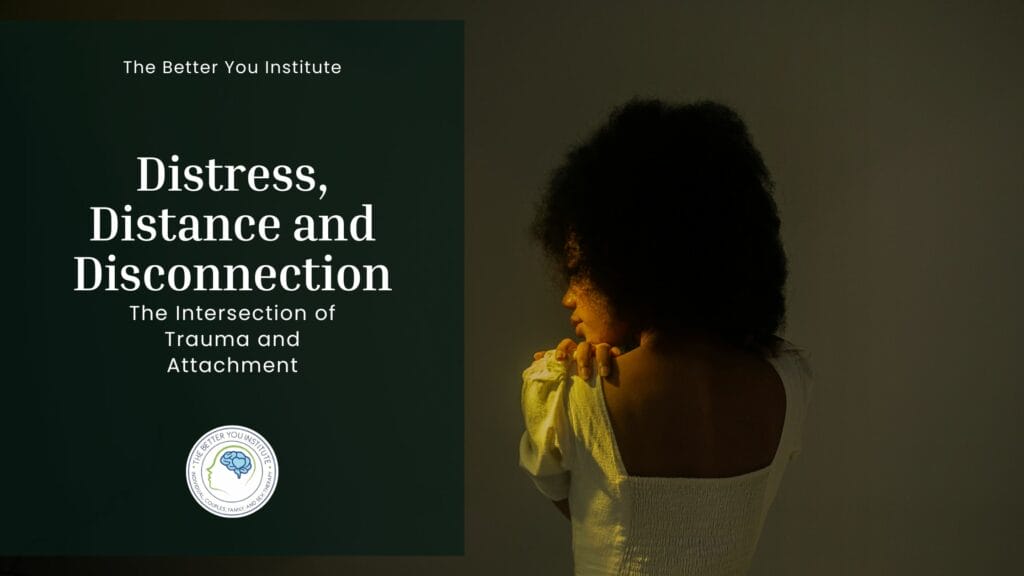
In a world that emphasizes constant connection, setting boundaries with people is crucial for maintaining healthy relationships and well-being. Many consider boundaries a method of keeping others at arms’ length. In actuality, boundaries are often the guidelines for yourself and others in your life to help maintain a relationship. Boundaries act as the protective armor that shields us from emotional exhaustion, exploitation, and burnout. They define the limits of what is acceptable and unacceptable behavior, allowing us to maintain respect, communication, and emotional balance in our interactions. In this blog, we will explore the significance of setting boundaries, understand common challenges, and provide practical strategies to empower you in establishing and preserving healthy boundaries with the people in your life.
Table of Contents
The Power of Boundaries in Relationships
Setting boundaries is an essential act of self-respect and self-care. It sends a clear message about our values, needs, and expectations in any relationship, whether with family, friends, colleagues, or romantic partners. Boundaries serve as guidelines for acceptable behavior, protecting us from threats like emotional manipulation, toxicity, and draining interactions.
When we establish these rules for our relationships, we foster trust and open communication with others. By clearly communicating our limits, we enable the other person to understand us better and treat us with respect. Boundaries also promote a healthy balance between giving and receiving, ensuring that we do not compromise our own needs to meet the demands of others. Below, we will discuss a few essential steps to learning your boundaries and how to establish them.
“How do I know if I struggle with boundaries?”
Sometimes, people will wonder if they struggle with boundaries or not. Other times, an individual may not even be aware of what boundaries are until someone in their life crosses them. It can be easy to mistake boundaries for demands or “consequences” in navigating relationships. Put this way, boundaries are simply the limit you set within relationships of any kind in which you hold yourself and others accountable for how they treat you. You may struggle with boundaries if:
- You move on from distressing conflicts without any communication or resolution around it
- Others hurt your feelings repeatedly without accountability or communication about it
- You provide more of your time and resources than are feasible for your well-being, i.e.,
- staying at work late to finish extra work assigned past your designated hours
- offering to take on the tasks of your siblings or friends if they are busy but you are also overwhelmed
- giving others money or belongings when you are also in need of those resources
- You share personal information when others ask, even though you are not comfortable doing so
These are just a few of the many various ways a person can struggle with overextending themselves or struggling to emphasize their limits. If any of these examples felt relatable, the first step is to show yourself grace. Loose boundaries are incredibly common for individuals for a variety of reasons. Sometimes, individuals witness loose boundaries in their family of origin, which can be a deeply ingrained, “normal” way of experiencing relationships. Other times, individuals struggle with self-esteem, and one of the symptoms is loose or non-existent boundaries to gain approval from others. Also, loose boundaries can result from problematic or abusive relationships, which become a pattern in response to surviving that dynamic. Regardless of where it comes from, examining the following methods for understanding your boundaries and how you would like to maintain them is worthwhile.
The Art of Self-Reflection
Before setting boundaries, it is essential to examine your emotional self. Reflect and identify your emotional triggers, sensitivities, and non-negotiables in relationships. Ask yourself:
- What actions or behaviors make me uncomfortable or upset?
- Which aspects of my life require protection and preservation?
- What values do I hold dear and wish to uphold in all my interactions?
Understanding your boundaries will empower you to communicate them effectively to others.
Communicate Boundaries with Clarity and Confidence
Straightforward and assertive communication is the foundation of setting boundaries. Avoid being passive or vague in expressing your limits. Instead, use “I” statements to convey your feelings and needs, such as “I feel overwhelmed when…” or “I need some time to myself because…”
Being confident in your communication helps others understand the importance of your boundaries and encourages them to respect your wishes.
The Art of Saying “No”
One of the most challenging aspects of setting boundaries is learning to say “no” gracefully. Many of us fear disappointing or hurting others by refusing their requests, but saying “no” is not selfish; it is an act of self-preservation. Practice saying “no” and sitting in the feelings of discomfort that arise. Notice how they feel in your body and examine the role these feelings have in the situation. Remember, you are not obligated to provide a detailed explanation for your boundaries. A simple, polite decline is sufficient.
Establishing Boundaries Early and Consistently
It is easier to set boundaries from the beginning of any relationship. Doing so creates a solid foundation of mutual respect and understanding. However, there is always time to start. Be consistent in upholding your boundaries. People may test your limits, mainly if they are accustomed to overstepping them. Stay firm and unwavering in protecting your boundaries; eventually, others will learn to respect them, or you can limit their access to you.
Recognizing Red Flags and Addressing Issues
Pay attention to how others respond to your boundaries. If someone consistently disrespects or ignores your limits, it may be a red flag for an unhealthy relationship or warrant a conversation about differences in needs. In such cases, consider having a respectful conversation about your boundaries and the importance of respecting them. If the problematic behavior persists, reevaluating the relationship might be necessary for your well-being.
Prioritizing Self-Care and Personal Growth
Setting boundaries allows you to prioritize self-care without guilt. Take time for yourself, engage in activities that bring you joy, and invest in your personal growth. If you feel guilt when prioritizing your self-care, acknowledge this emotion and try to identify its purpose. Once you do this, try continuing to embrace self-care anyway. Eventually, as this process becomes less foreign, your guilt or selfishness may subside, and you can engage in self-care more regularly. As you grow and change, prepare for your boundaries to evolve as well possibly. Embrace this journey of self-exploration and empowerment, knowing that you have the right to protect your well-being and happiness.
Conclusion
Setting boundaries with people can be transformative for you and your relationships. It can lead to healthier, more fulfilling relationships and a stronger sense of self. You create an environment of respect and understanding by understanding your values, communicating clearly, and staying consistent. Regardless of where you may be with the strength of your boundaries, a few suggestions can get you on the right track to developing a straightforward method of building your limits. Learn to say “no” as a complete sentence, be open to negotiation when appropriate, and recognize and address red flags in relationships.
Remember, setting boundaries is not about building walls; it’s about creating bridges that allow for genuine connections and mutual growth. Prioritize self-care because only when you care for yourself can you be fully present and supportive in your relationships with others. With that said, embrace the art of setting boundaries as a dedication to self-love and empowerment. By doing so, you will pave the way for healthier, more balanced relationships that enrich your life and the lives of those around you.
Meet The Author:

Brianna Intili
Professional Counselor
Brianna Intili, MA, NCC, is a Professional Counselor and Director of Professional Development specializing in mindfulness-based approaches to help clients find peace in adversity. Focused on empathetic, judgment-free counseling, she empowers individuals to overcome challenges like mood disorders, low self-esteem, and life transitions. With a BS in Psychology from James Madison University and an MA in Clinical Mental Health Counseling from Marymount University, Brianna combines cognitive techniques and a holistic view for a fulfilling life.
Learn more about Brianna Intili ⇒










